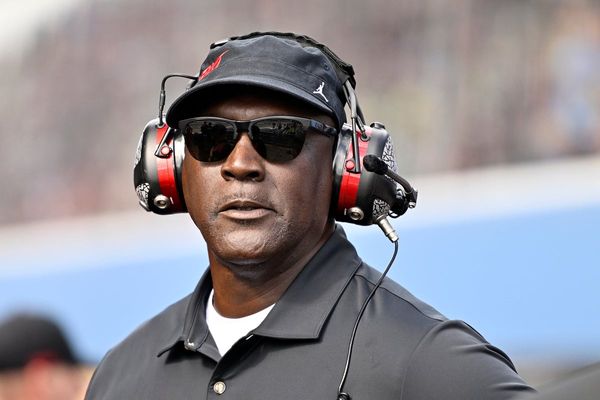California’s Reparations Task Force Committee is exploring a proposal to increase funding for Black students in public schools, a significant new conduit for reparations.
During the panel’s meetings in Sacramento earlier this month — and nearly three years after Gov. Gavin Newsom tasked the panel with developing recommendations for Black residents affected by the legacy of slavery — the task force heard a presentation on how reparations could be leveraged to bolster school funding.
Margaret Fortune, president and CEO of Fortune School of Education, which operates 10 public charter schools in California, proposed that Black children should be added to the local control funding formula, or the LCFF, money generated based on enrollment of high-needs students including English language learners, low-income students and foster youth.
That proposal for funding, which Fortune said would be additional funds and would not affect money allocated to other vulnerable student groups, could benefit more than 81,000 Black students in K-12 education if they were included in the LCFF. It is estimated to be around $533 million, Fortune said.
The panel has until July 1 to submit its final report to the Legislature.
The idea of providing additional funding to K-12 students is already being discussed by the Legislature through Assembly Bill 2774, which calls for supplemental grants for California’s lowest-performing students. The bill by Assemblywoman Akilah Weber, D-San Diego, could generate $300 million for students, but it makes no mention of race.
“How can we have a reparations discussion when we aren’t discussing Black students explicitly?” Fortune asked. “We don’t acknowledge Blackness.”
Black students are one of the lowest-performing student groups in California, according to Fortune.
About 70% of Black students don’t read at grade level on state testing, and 84% of Black students are not doing math at grade-level on state tests.
Those numbers have increased in the last year partially due to many Black students being held back in high school, according to Fortune.
Gov. Gavin Newsom, meanwhile, proposed in January to fund California’s lowest-income schools and certain vulnerable student groups who have the lowest performance.
But most Black students are not in the state’s lowest-income schools. And if they were, they would already be funded through grants and additional programs, Fortune said.
“It’s a very different conversation to fund the lowest-income schools in the state than the lowest-performing children,” Fortune said. “Those are two different things. If you fund the lowest-income schools in the state, you are funding the bottom 5% of all schools in the state. Only 6% of those children are Black.”
Just like Weber’s bill, Newsom’s proposal could generate $300 million for about 420,000 California students, 22,700 of whom are Black students. But Fortune told the task force that under Newsom’s proposal the state’s Black students would only receive about $16 million of that money.
“These are crumbs,” Fortune said. “This is not systemic change.”
The Black in School Coalition, a community of educational scholars, educators and leaders, has a third proposal to fund any student group that performs poorly or is identified by the state as a vulnerable population, including groups identified by race. Their proposal would generate $300 million for 81,000 students.
Prop. 209 would be a hurdle
Fortune’s proposal to designate Black students as a vulnerable population in California so that they may receive additional funding would be a challenge.
California’s Proposition 209, which was passed by state voters in 1996, bans policies that benefit or discriminate against racial and ethnic groups and gender. University of California Regent Ward Connerly campaigned to successfully ban affirmative action in the college system and ultimately in the state.
An attempt at repealing Prop. 209, which creates a hurdle for those who want supplemental funding for Black students in K-12 education, failed in 2020.
“I want to remind us that it was someone who wears our colors but didn’t play on our team, Ward Connerly, who put us in this mess,” said task force member Amos Brown.
Task force member Don Tamaki said the group would need more input from Fortune on the proposal, agreeing that Prop. 209 would prevent her idea from moving forward. “Obviously this thing was created by hate and racism, and now you can’t consider race to fix it,” Tamaki said.
Many groups support reparations
About 70 organizations from diverse backgrounds are endorsing the task force and the study of reparations, including the ACLU and South Asian Bar Association of Southern California.
“Why? Because they know the healing power of reparations,” said Tamaki.
The reparations task force will meet again March 29 and 30 in Sacramento, and approval of the final report is set for May 2 in the capital. By June, the task force expects hundreds more organizations to support the task force and the call for reparations.
Assemblyman Reginald Jones-Sawyer, D-Los Angeles, said the biggest challenge will be getting the proposal to the Legislature and Newsom’s desk.
“We will need as many allies as possible. There are a lot of people we don’t need to convince, just make sure they know what’s going on and they will gladly join,” Jones-Sawyer said.
“The most important next step is getting others to sign on and support this,” he said. “They put in a lot of hours, they put a lot of blood, sweat and tears. It’s a labor of love.
“We have a great start. It’s what united all of us in getting as many people outside of this room and outside of this committee to join hands with us and fight for this.”
____







